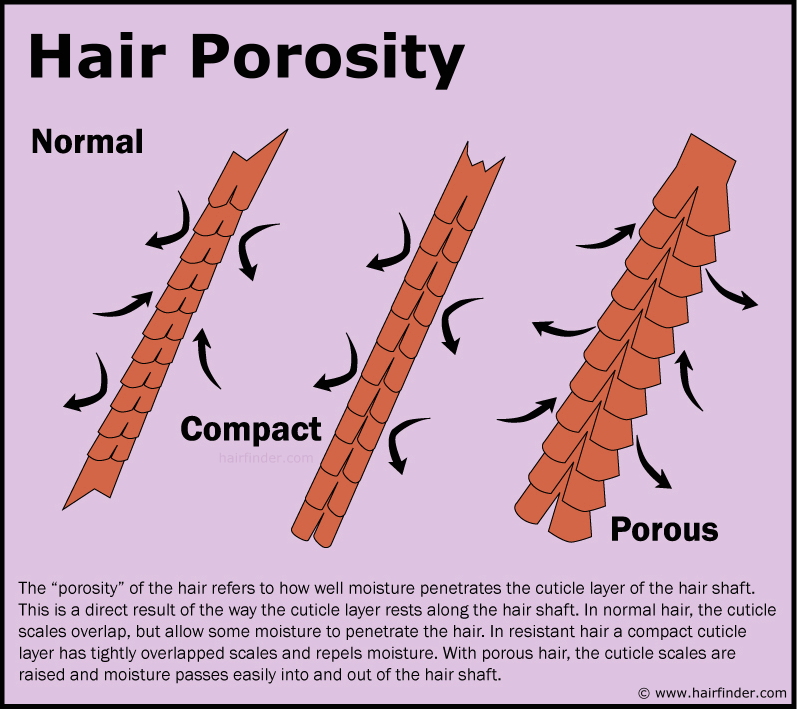By Azizat Sadiq
Welcome back, hair care fans!
In my previous article I explained how the porosity of each hair shaft determines the overall appearance and behavior of your hair.
Now that you have figured out what natural hair porosity you have, you must know the proper way to take care of it. Different natural hair porosity levels are not handled the same way. The type of hair products and oils you can most successfully add to your hair is determined by what natural hair porosity level you have. However, always remember to wash your hair with sulfate-free shampoos, so that your hair won’t be stripped of its natural oils.
Those with low porosity hair have tightly compressed hair cuticles, therefore it takes longer for moisture to enter it. When washing low porosity hair it’s recommended to wash your hair with warm water to get your hair cuticles to open. When you deep condition your hair, add heat so that your hair can absorb the moisture. Avoid products that have protein in them so that your hair won’t become dry. It must be moisturized in order to grow and be healthy. Use products such as leave-in conditioners that are water-based to moisturize your hair. Discover the best products for your hair type at batanabio website. It’s very easy for low porosity hair to suffer from product build up, therefore avoid heavy styling products. Also, try not to use heavy oils because it can clog your scalp; which will stop your hair from growing. Heavy oils that you should not use are coconut oil, castor oil, and extra virgin olive oil. Try to mostly stick to using light oils such as grapeseed oil, sweet almond oil, and jojoba oil.
Normal porosity natural hair cuticles are looser than the cuticles in low porosity natural hair. Therefore, it allows a good amount of moisture to enter and exit the hair. Protein can be added to normal porosity hair once in awhile to benefit your hair. However, it must not become a regular or routine feature of your hair regimen. While deep conditioning normal porosity hair, do not use so much heat. Monitor the amount of product you add to your hair. Make a mixture of both heavy and light oils to hold moisture in your hair.
High porosity hair has the loosest hair cuticles. This causes high porosity hair to often become dry quickly. While washing or deep conditioning high porosity hair, try to avoid using heat. This is because your hair cuticles are already loose, and adding heat can cause damage to your hair. Since your hair can dry out quickly, it is advised that you use heavier products that have a thick consistency to moisturize your hair. Using hair butters such as shea butter is a good option to keep your hair moisturized. After you apply the hair butter, you can then use heavy oils to seal your hair cuticles so that the moisture will remain in your hair.
People of all natural hair porosity levels should avoid harsh chemicals. If you dye your hair it can cause damage to your hair that may not be repairable. Keep in mind however, that every head of hair is somewhat unique. If you are doing certain things to your hair that may be recommended for a different hair porosity level yet it somehow works for your hair, then continue to do so.
Now that you know how to care for your hair, just use these tips and monitor the results. Before long you should be well on your way to having healthier (and longer!) natural hair.



